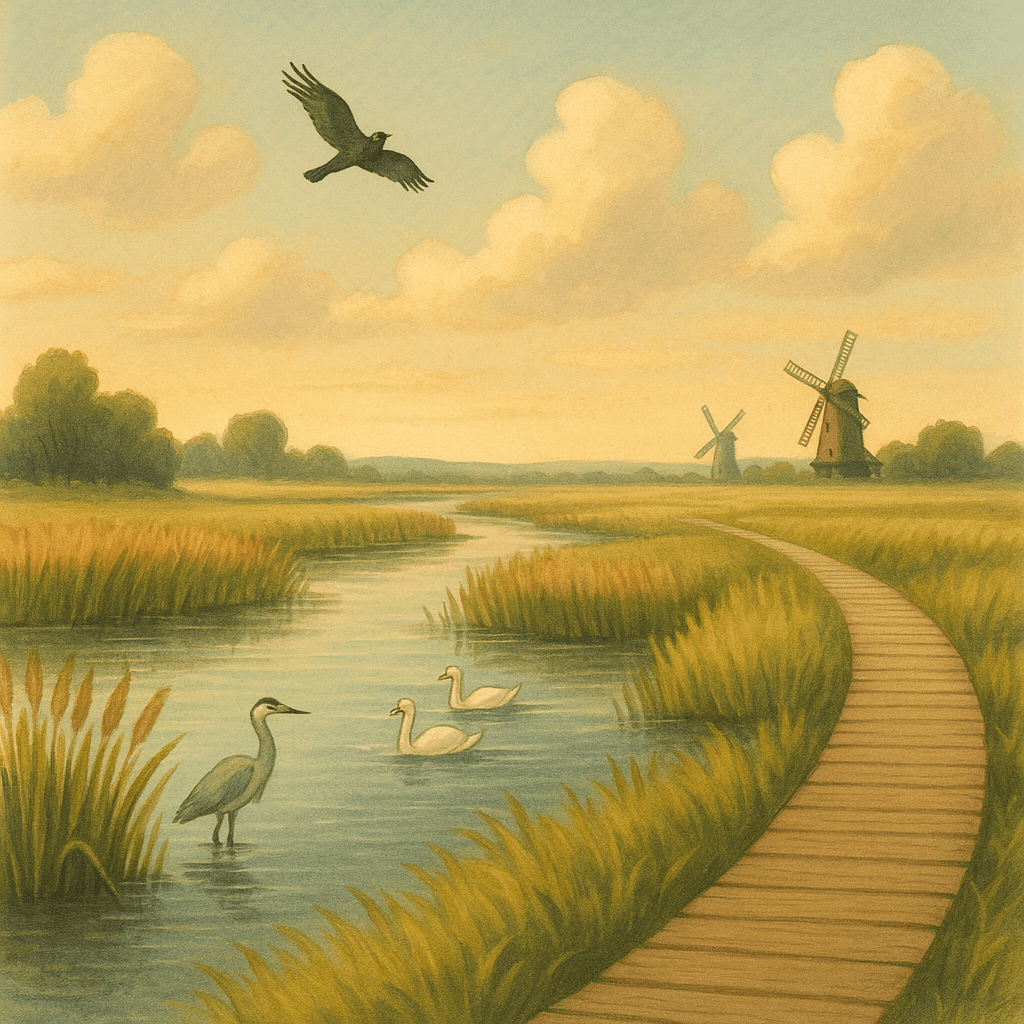There’s a place in eastern England where the land feels almost like water. Where the sky stretches wide above your head. And where quiet roads cut through flat, peaceful fields.
That place is called The Fens, or Fenlands. It’s one of the most unique landscapes in all of England. At first glance, it may seem simple. But the more time you spend here, the more it begins to reveal its quiet beauty.
Let’s take a gentle journey through the wetlands, waterways, and wonder of the Fens.
What Are the Fens?
The Fens are low-lying lands in eastern England, stretching across parts of Lincolnshire, Cambridgeshire, Norfolk, and a little bit of Suffolk. Much of the land here is at or below sea level. That’s why taunton spreading yew the area is crisscrossed with drains, dykes, rivers, and pumps.
In the past, the Fens were wild wetlands. Swamps, reedbeds, and open water stretched as far as the eye could see. But beginning in the 1600s, people started draining the land to make it farmable. It wasn’t easy. They had to build channels and pumps, often by hand.
Over time, this hard work turned the Fens into some of the richest farmland in all of Europe.
A Land of Sky and Stillness
The Fens are known for their flatness.
That might not sound exciting. But step into this wide-open world and you’ll start to see the magic. With no hills in the way, the sky becomes enormous. Sunsets stretch for miles. Storms roll in like slow-moving paintings. And on misty mornings, wealthy apple everything feels hushed and dreamlike.
It’s a place that helps you slow down. Take a breath. Listen to the wind in the reeds. Or the cry of a marsh harrier above.
In the Fens, stillness isn’t empty. It’s full of life.
Nature Finds a Way
Even though much of the Fens have been turned into farmland, there are still places where nature holds on—and even thrives.
You can visit Wicken Fen, vatnajökull national park one of the oldest nature reserves in Britain. Walk the boardwalks, watch for wild ponies, and listen for bitterns booming from the reeds. It’s a rare glimpse of what the Fens looked like long ago.
Other wildlife-rich spots include:
- Welney Wetland Centre – Famous for thousands of overwintering swans
- Ouse Washes – A vital floodplain full of waders and ducks
- The Great Fen Project – A plan to restore thousands of acres back to natural fenland
These places aren’t just pretty. They’re important. Wetlands help control flooding, store carbon, and support hundreds of species.
Life in the Fen Towns
People have lived in the Fens for thousands of years.
At first, they built homes on dry islands called “eyots” or “isles.” That’s why you’ll see towns like Ely (meaning “eel island”) and Whittlesey. Ely, in particular, is a gem—its soaring cathedral rising out of the flatlands like a ship on the sea.
Many Fen towns have cozy high streets, strong farming roots, and weekly markets. You’ll also find old churches, windmills, and local museums that tell the story of life on the land.
People here are proud. And friendly. They know how to work with the land—and the water.
Farming and Food
The soil in the Fens is deep and dark—perfect for growing.
Farmers here grow a wide range of crops: potatoes, carrots, sugar beets, onions, leeks, and grains. Some of the UK’s food supply starts in these fields.
In fact, if you’ve eaten chips, carrots, or salad lately, there’s a good chance it came from the Fens.
Farmers markets and roadside stands offer seasonal produce. You might find fresh asparagus in spring or huge pumpkins in autumn. It’s a great way to taste the land itself.
Water Is Everywhere
The Fens wouldn’t exist without water.
Canals, rivers, and drains form a huge network clay slabs that keeps the land dry. You’ll often see drainage pumps—some modern, some old-fashioned steam engines like the one at Stretham Old Engine. These pumps help move water from low fields into higher rivers.
The River Great Ouse, River Nene, and River Welland all pass through the Fens. Boaters, anglers, and birdwatchers all find joy along these gentle waters.
It’s a watery world, even if you’re standing on solid ground.
The Fens in Folklore
The Fens have always inspired stories.
Maybe it’s the mist. Maybe it’s the stillness. But people have long told tales of strange creatures, ghostly lights, and hidden secrets in the marsh.
One famous legend is the Tiddy Mun—a tiny spirit said to control the floods. Locals once poured offerings into ditches to keep him happy.
There are also stories of will-o’-the-wisps, mysterious lights that lead travelers off the path.
These old tales give the land a magical feeling. Like the past is never far away.
Why the Fens Matter
The Fens may seem quiet. But they are deeply important.
They produce food. They hold history. They protect wildlife. And they remind us how closely people and nature are connected.
They also teach us something simple but powerful: there’s beauty in the gentle places. You don’t need mountains or castles to feel wonder. Sometimes all it takes is a soft wind over a field and the sight of a heron rising from a reedbed.
Come See for Yourself
If you’ve never been to the Fens, come visit.
Take a boat ride. Walk a nature trail. Watch the sky change colors at sunset. Talk with locals. Try the produce. Listen to the land.
It might not shout for your attention—but it will stay with you.
The Fens are waiting, quietly.
